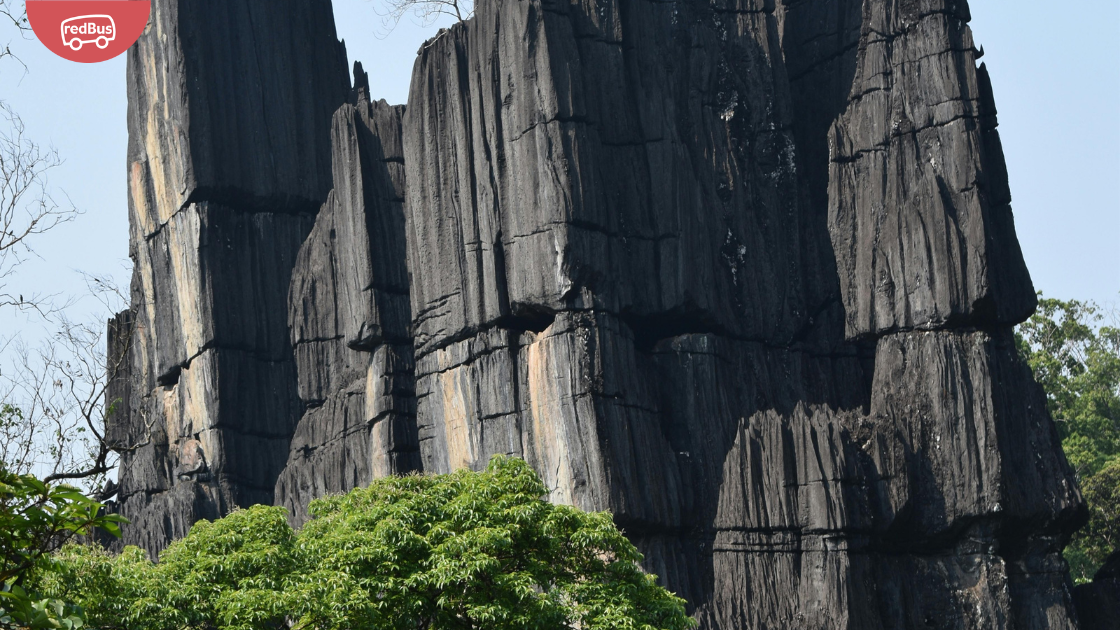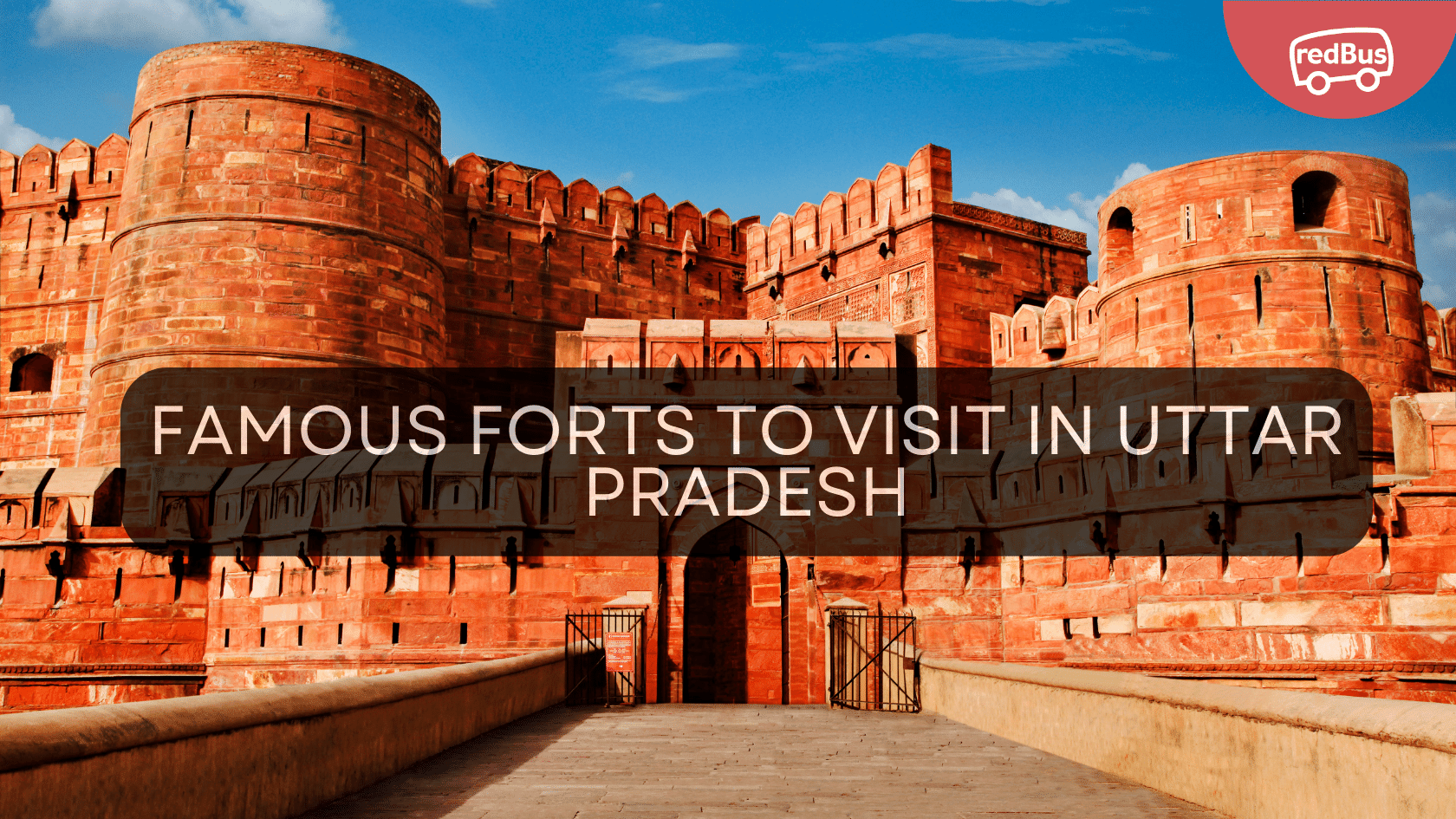Uttar Pradesh, often referred to as the heartland of India, is a state rich in cultural heritage and historical significance. The state is a treasure trove of architectural marvels, from ancient temples to grand palaces. Among its many attractions, the forts of Uttar Pradesh stand out as symbols of the region’s royal past and strategic importance. In this blog, we will explore some of the most famous forts in Uttar Pradesh, each with its unique history and architectural grandeur.
1. Agra Fort
Agra Fort, a UNESCO World Heritage site, is one of the most prominent forts in India. Built by the Mughal Emperor Akbar in the 16th century, this massive red sandstone fort served as the main residence of the Mughal emperors until the capital was shifted to Delhi. The fort has witnessed numerous historical events, including the coronation of Shah Jahan and the imprisonment of Aurangzeb.
The fort complex houses several stunning structures such as the Jahangir Mahal, Diwan-i-Am (Hall of Public Audience), Diwan-i-Khas (Hall of Private Audience), and the iconic Moti Masjid (Pearl Mosque). The intricate carvings, grand courtyards, and majestic gates, like the Amar Singh Gate and Delhi Gate, reflect the splendor of Mughal architecture.
2. Allahabad Fort
Built by Emperor Akbar in 1583, the Allahabad Fort stands at the confluence of the Ganges and Yamuna rivers. It is the largest fort built by Akbar and holds immense historical and religious significance. The fort played a crucial role during the Indian Rebellion of 1857 and later served as a British military base.
The fort is known for its massive walls, three magnificent galleries, and the Ashoka Pillar, which dates back to the 3rd century BCE. The Saraswati Koop, a well said to be the source of the Saraswati River, and the Patalpuri Temple, located within the fort, add to its spiritual importance.
3. Jhansi Fort
Jhansi Fort, also known as Rani Jhansi Ka Quila, is a symbol of valor and resistance during the Indian Rebellion of 1857. The fort was the stronghold of Rani Lakshmibai, the queen of Jhansi, who fiercely fought against the British forces. Built by Raja Bir Singh Deo of Orchha in the early 17th century, the fort is a testament to the Bundela Rajput architecture.
The fort is characterized by its massive walls, bastions, and a maze of underground tunnels. Notable structures within the fort include the Baradari, Panch Mahal, and the Ganesh Mandir. The museum within the fort showcases artifacts and weapons used during the 1857 rebellion.
4. Chunar Fort
Perched on the banks of the Ganges in the Mirzapur district, Chunar Fort has a history that dates back to the Mauryan period. It has been ruled by several dynasties, including the Mauryas, Shungas, Guptas, and the Mughals. The fort played a strategic role in controlling the region due to its location on a hill overlooking the river.
Chunar Fort is known for its massive stone walls, ancient temples, and intricate carvings. The fort complex includes the Sonwa Mandap, the Sun Clock, and a British cemetery. The panoramic view of the Ganges from the fort adds to its allure.
5. Fatehpur Sikri
Fatehpur Sikri, a UNESCO World Heritage site, was built by Emperor Akbar in the late 16th century as the capital of the Mughal Empire. However, the city was abandoned shortly after due to water scarcity. The fort complex, with its stunning palaces, courtyards, and mosques, stands as a testament to Akbar’s vision and architectural prowess.
The fort complex includes the Buland Darwaza, the largest gateway in the world, the Jama Masjid, and the Tomb of Salim Chishti. The Diwan-i-Khas, Diwan-i-Am, Panch Mahal, and Jodha Bai’s Palace are some of the other notable structures within the complex.
6. Kalinjar Fort
Located in the Banda district, Kalinjar Fort is one of the oldest forts in India. Its origins date back to the Gupta period. The fort has been a significant stronghold for various dynasties, including the Chandela Rajputs and the Mughals. It played a crucial role in the region’s defense strategy.
Kalinjar Fort is known for its massive gates, including the Alamgir and Hanuman Gate. The fort houses several temples, palaces, and water tanks. The Neelkanth Temple, dedicated to Lord Shiva, and the Sita Sej, a cave with ancient carvings, are among the notable structures within the fort.
7. Ramnagar Fort
Situated on the eastern bank of the Ganges in Varanasi, Ramnagar Fort was built in the 18th century by Kashi Naresh Raja Balwant Singh. The fort serves as the residence of the Maharaja of Varanasi and is an excellent example of Mughal-style architecture.
The fort complex includes the Veda Vyasa Temple, the Dakshin Mukhi Hanuman Temple, and the Durga Temple. The fort also houses a museum that displays vintage cars, royal costumes, antique weapons, and an impressive collection of manuscripts.
8. Sikandra Fort
Sikandra Fort, located in Agra, is the final resting place of Emperor Akbar. The construction of the fort was initiated by Akbar himself and was completed by his son, Jahangir. The fort reflects a perfect blend of Hindu, Islamic, Christian, Buddhist, and Jain architectural styles.
The main attraction of Sikandra Fort is Akbar’s Tomb, a magnificent structure made of red sandstone and white marble. The tomb is surrounded by lush gardens and features intricate carvings, beautiful archways, and a massive central courtyard.
9. Shahi Qila
Shahi Qila, also known as the Fort of Allahabad, was originally built by Mughal Emperor Akbar in 1583. It is located at the confluence of the Ganges and Yamuna rivers and has witnessed several historical events, including the revolt of 1857.
The fort is known for its massive walls, three splendid galleries, and the Ashoka Pillar. The Patalpuri Temple and the Saraswati Koop, located within the fort complex, add to its historical and religious significance.
10. Sasaram Fort
Sasaram Fort, located in the Sasaram district, is associated with Sher Shah Suri, the founder of the Suri Empire in North India. The fort was built in the 16th century and served as a strategic military base.
The fort is known for its massive stone walls, grand gateways, and ancient water systems. The tomb of Sher Shah Suri, a stunning example of Indo-Islamic architecture, is located near the fort and is a major attraction.
Conclusion
The forts of Uttar Pradesh are more than just architectural wonders; they are a testament to the state’s rich history and cultural heritage. Each fort has its unique story, architectural style, and historical significance, offering a glimpse into the glorious past of the region. Whether you are a history enthusiast, an architecture lover, or a traveler seeking to explore the grandeur of India’s heritage, the forts of Uttar Pradesh provide a fascinating journey through time.
Exploring these majestic forts is an enriching experience that allows you to connect with the past and appreciate the grandeur of India’s architectural and historical legacy. So, plan your trip to Uttar Pradesh and embark on a journey through history, exploring the magnificent forts that stand as a testament to the region’s royal and strategic significance.










